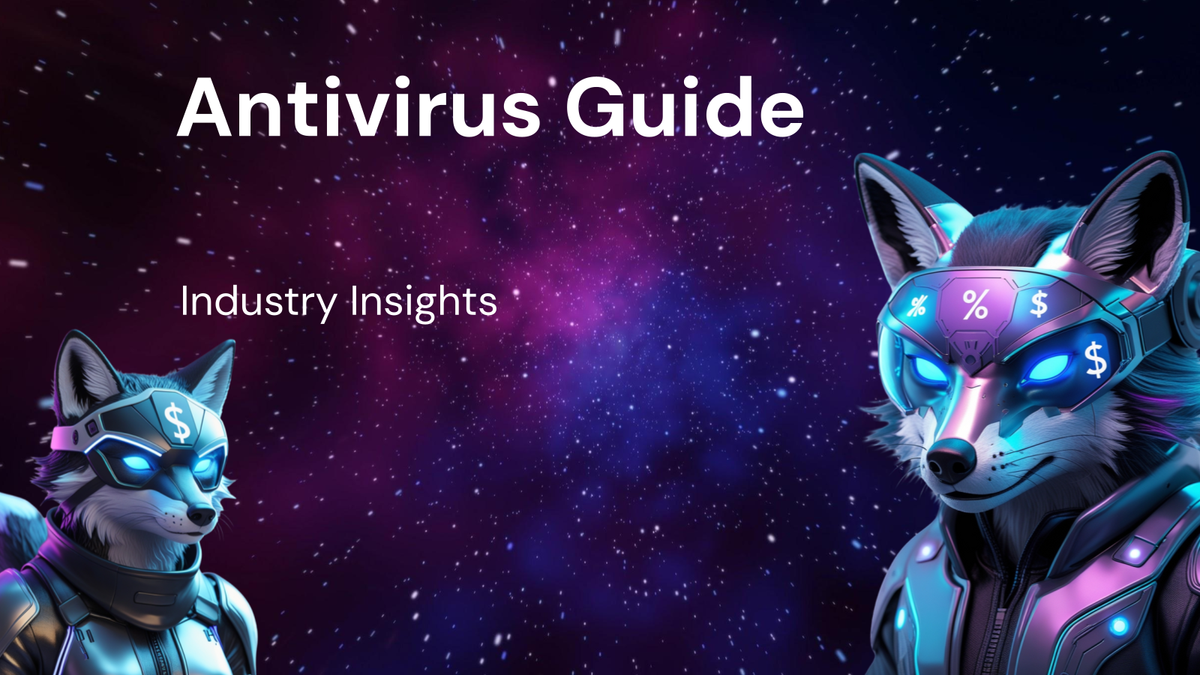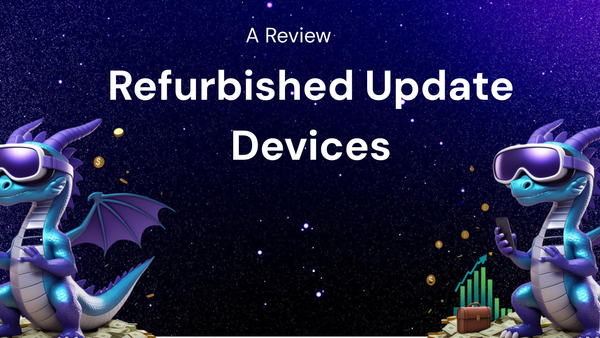Industry Insights: A Guide to Antivirus

Industry Insights: A Guide to Antivirus
In today's digital landscape, where cyber threats lurk around every corner, antivirus software has become an indispensable tool for individuals and businesses alike. But with a plethora of options available, each boasting unique features and functionalities, navigating the world of antivirus can feel overwhelming. This comprehensive guide delves into the core concepts of antivirus, explores its evolution, examines different types of threats, and provides practical advice on selecting and utilizing the right antivirus solution for your specific needs.
I. The Ever-Evolving Landscape of Cyber Threats
Before diving into the intricacies of antivirus, it's crucial to understand the ever-evolving landscape of cyber threats. Cybercriminals are constantly developing new and sophisticated methods to compromise systems, steal data, and disrupt operations. Understanding these threats is the first step in protecting yourself.
- Malware: This is a broad term encompassing various malicious software designed to infiltrate and harm computer systems. It includes viruses, worms, Trojans, ransomware, spyware, and more.
- Viruses: These malicious codes attach themselves to executable files or documents and spread when the infected file is executed. They often replicate rapidly, consuming system resources and potentially corrupting data.
- Worms: Unlike viruses, worms can self-replicate and spread across networks without requiring a host file. They exploit vulnerabilities in operating systems or applications to propagate, causing widespread damage and network congestion.
- Trojans: Disguised as legitimate software, Trojans trick users into installing them. Once installed, they can perform various malicious activities, such as stealing data, opening backdoors for attackers, or installing other malware.
- Ransomware: This type of malware encrypts a victim's files and demands a ransom payment in exchange for the decryption key. Ransomware attacks can cripple businesses and organizations, causing significant financial losses and reputational damage.
- Spyware: As the name suggests, spyware secretly monitors user activity and collects sensitive information, such as browsing history, passwords, and financial data. This information is then transmitted to attackers, who can use it for identity theft or other malicious purposes.
- Adware: While not always malicious, adware can be intrusive and annoying. It displays unwanted advertisements, often redirecting users to malicious websites or tracking their online activity.
- Phishing: This deceptive technique involves tricking users into revealing sensitive information, such as usernames, passwords, and credit card details. Attackers often use emails or websites that mimic legitimate organizations to lure victims into providing their information.
- Social Engineering: This exploits human psychology to manipulate individuals into performing actions that compromise security. Attackers may pose as trusted individuals or organizations to gain access to sensitive information or systems.
- Rootkits: These stealthy programs are designed to hide malicious activity on a system. They can conceal malware, processes, and files from detection, making them difficult to remove.
- Zero-Day Exploits: These exploit vulnerabilities in software that are unknown to the vendor. Attackers can use zero-day exploits to compromise systems before a patch is available.
- Advanced Persistent Threats (APTs): These are sophisticated, long-term attacks targeting specific organizations or industries. APTs are often carried out by state-sponsored actors or organized crime groups.
II. The Evolution of Antivirus: From Simple Scanners to Comprehensive Security Suites
Antivirus software has evolved significantly since its inception in the late 1980s. Early antivirus programs were primarily focused on detecting and removing known viruses using signature-based detection. However, as the threat landscape became more complex, antivirus solutions evolved to incorporate more sophisticated techniques.
- Signature-Based Detection: This traditional method relies on comparing files against a database of known virus signatures. If a file's signature matches a known virus signature, the antivirus software flags it as malicious. While effective against known threats, signature-based detection is less effective against new or unknown malware.
- Heuristic Analysis: This technique analyzes the behavior of files and programs to identify suspicious activity. Heuristic analysis can detect new or unknown malware that doesn't match any known signatures. However, it can also generate false positives, flagging legitimate software as malicious.
- Behavioral Analysis: This monitors the actions of programs and processes in real-time to identify malicious behavior. Behavioral analysis can detect malware that attempts to modify system files, access sensitive data, or communicate with malicious servers.
- Sandboxing: This involves running suspicious files or programs in a virtualized environment, or "sandbox," to observe their behavior without risking the actual system. Sandboxing allows antivirus software to identify malware that attempts to evade detection or execute malicious code.
- Cloud-Based Scanning: This leverages the power of the cloud to scan files and programs against a vast database of known malware. Cloud-based scanning can improve detection rates and reduce the load on local systems.
- Machine Learning and Artificial Intelligence: Modern antivirus solutions are increasingly incorporating machine learning and artificial intelligence to detect and prevent cyber threats. These technologies can analyze large datasets of malware samples and identify patterns that are indicative of malicious activity.
- Endpoint Detection and Response (EDR): This advanced security solution provides real-time monitoring and analysis of endpoint activity to detect and respond to threats. EDR solutions can identify suspicious behavior, isolate infected systems, and provide detailed forensic analysis.
III. Types of Antivirus Software: Choosing the Right Solution for Your Needs
The antivirus market offers a wide range of solutions, each designed to address different needs and requirements. Understanding the different types of antivirus software is crucial for choosing the right solution for your specific situation.
- Free Antivirus: These basic antivirus programs offer essential protection against common threats. While free antivirus can be a good starting point, they often lack advanced features and may not provide comprehensive protection.
- Paid Antivirus: These offer a more comprehensive set of features and functionalities, including real-time protection, advanced scanning, firewall protection, and parental controls. Paid antivirus typically provides better protection against a wider range of threats.
- Internet Security Suites: These comprehensive security solutions combine antivirus protection with other security features, such as firewall protection, spam filtering, and web browsing protection. Internet security suites offer a more complete security solution for individuals and families.
- Endpoint Protection Platforms (EPPs): These are designed for businesses and organizations to protect their endpoints, such as desktops, laptops, and servers. EPPs typically include antivirus protection, firewall protection, intrusion detection, and data loss prevention.
- Mobile Antivirus: These are designed to protect smartphones and tablets from mobile threats, such as malware, phishing attacks, and malicious apps. Mobile antivirus can also provide features such as remote wiping and device tracking.
IV. Selecting the Right Antivirus: Factors to Consider
Choosing the right antivirus software can be a daunting task, but considering the following factors can help you make an informed decision:
- Detection Rates: The most important factor to consider is the antivirus software's detection rate. Look for antivirus solutions that consistently score well in independent tests conducted by reputable organizations like AV-Test and AV-Comparatives.
- Performance Impact: Antivirus software can consume system resources, potentially slowing down your computer. Choose an antivirus solution that has a minimal impact on system performance.
- Features and Functionality: Consider the features and functionalities that are important to you. Do you need firewall protection, parental controls, or other advanced features?
- Ease of Use: The antivirus software should be easy to install, configure, and use. Look for solutions with a user-friendly interface and clear instructions.
- Customer Support: Choose an antivirus provider that offers reliable customer support. In case of problems, you need to be able to get help quickly and easily.
- Price: Antivirus software prices vary widely. Consider your budget and choose a solution that offers the best value for your money.
- Operating System Compatibility: Ensure the antivirus software is compatible with your operating system (Windows, macOS, Android, iOS).
- Real-time Protection: This feature is essential for preventing malware from infecting your system in the first place. Make sure the antivirus solution offers real-time protection.
- Regular Updates: Antivirus software needs to be updated regularly to protect against the latest threats. Choose a solution that provides frequent updates.
V. Best Practices for Using Antivirus Software
Once you've selected the right antivirus software, it's important to follow these best practices to ensure optimal protection:
- Keep Your Antivirus Software Up-to-Date: Regularly update your antivirus software to ensure it has the latest virus definitions and security patches.
- Run Regular Scans: Schedule regular scans to detect and remove any malware that may have slipped through the cracks.
- Enable Real-Time Protection: Ensure that real-time protection is enabled to prevent malware from infecting your system in the first place.
- Be Careful When Opening Email Attachments and Clicking on Links: Be cautious when opening email attachments or clicking on links from unknown senders. These could be phishing attempts or contain malware.
- Download Software From Trusted Sources: Only download software from trusted sources, such as the official website of the software vendor.
- Use Strong Passwords: Use strong, unique passwords for all of your online accounts.
- Keep Your Operating System and Software Up-to-Date: Regularly update your operating system and software to patch security vulnerabilities.
- Use a Firewall: A firewall can help prevent unauthorized access to your system.
- Be Aware of Social Engineering Tactics: Be aware of social engineering tactics and don't give out sensitive information to unknown individuals or organizations.
- Back Up Your Data Regularly: Back up your data regularly to protect against data loss in case of a malware infection or other disaster.
VI. The Future of Antivirus: Adapting to New Threats
The cyber threat landscape is constantly evolving, and antivirus software must adapt to keep pace. The future of antivirus will likely involve:
- Increased Use of Artificial Intelligence and Machine Learning: AI and machine learning will play an increasingly important role in detecting and preventing cyber threats.
- More Focus on Behavioral Analysis: Behavioral analysis will become more sophisticated and accurate, allowing antivirus software to identify malicious activity with greater precision.
- Integration with Cloud Security Solutions: Antivirus software will increasingly integrate with cloud security solutions to provide comprehensive protection for both on-premises and cloud environments.
- Emphasis on Proactive Threat Hunting: Antivirus solutions will incorporate proactive threat hunting capabilities to identify and eliminate threats before they can cause damage.
- Greater Automation: Antivirus software will become more automated, reducing the need for manual intervention and improving efficiency.
VII. Conclusion
Antivirus software is a crucial component of any comprehensive security strategy. By understanding the ever-evolving landscape of cyber threats, selecting the right antivirus solution for your needs, and following best practices, you can significantly reduce your risk of becoming a victim of cybercrime. While no antivirus solution is perfect, staying informed and proactive is essential for protecting your digital assets in today's increasingly dangerous online world. Remember to regularly evaluate your security posture and adapt your defenses as new threats emerge. The battle against cybercrime is a continuous one, and vigilance is key to staying ahead of the curve.




